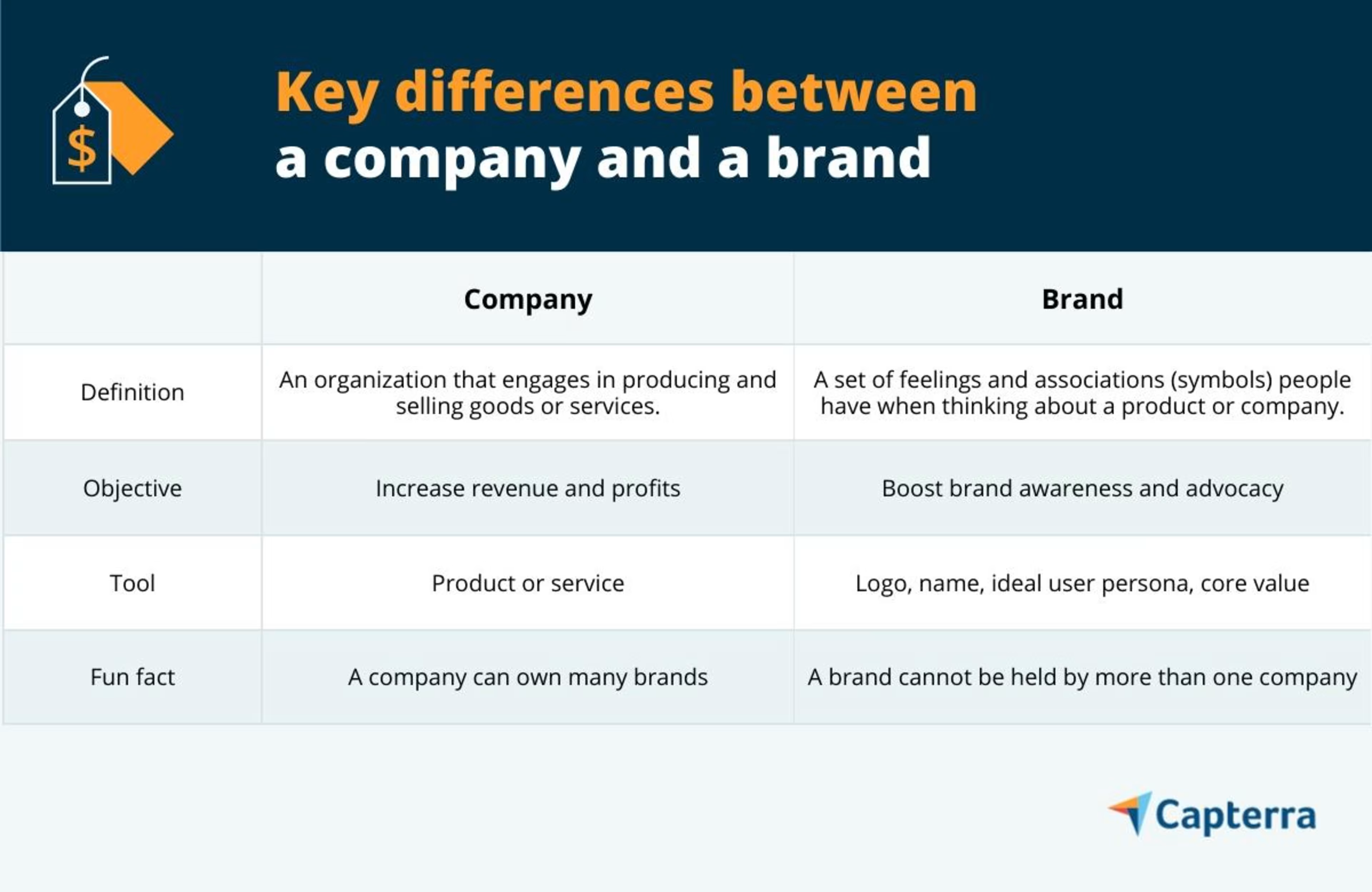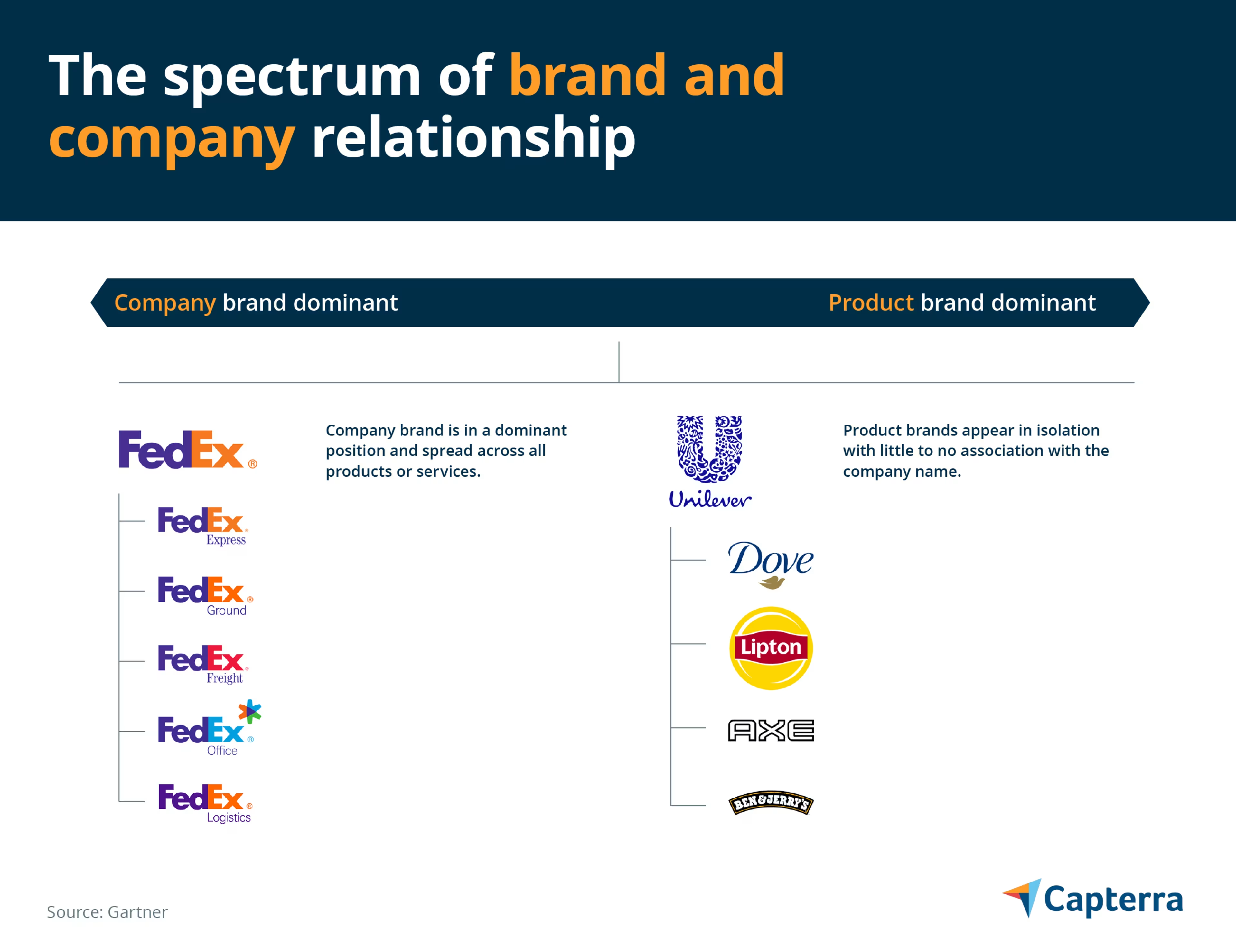Learn the difference between getting your company off the ground and creating a brand that customers remember.
As a small business owner, should you focus on sales or brand-building?
Small businesses are often too distracted by what’s measurable (e.g., sales, returns), forsaking the broader cumulative effect of activities such as branding. They feel branding is optional. They’d rather focus on establishing their company, gaining a foothold, and keeping the doors open than on building a brand. But they don’t realize the two are intertwined.
Successful businesses, big or small, don’t sell products—they sell experiences that inspire people to buy. Coca-Cola, for instance, has been around for over a century, and it doesn’t sell a soft drink in a bottle but a gulp of “happiness.”[1]That’s a company turned into a good brand!
If you’re an entrepreneur trying to understand how creating a brand differs from setting up a company, read on. We explain how a brand builds a company, and vice-versa, and show why you need to strike a balance between the two.
Find providers that can help with your business needs by using our lists of branding agencies by location.
Brand vs. company: What are the differences?
If you think a brand and a company mean the same, think again. Here’s a quick look at how launching a company and building a brand are two distinct concepts.
A brand is a feeling; a company is an organization with a product or service. Brand is the emotion you feel when you think about a product or a company. For instance, buying an iPhone is about a lifestyle and desire to belong to a select group. On the other hand, Apple Inc., the company that owns the iPhone brand also sells other products, including iWatch, MacBook, iPad, and AirPods.
A brand is born gradually; a company is born legally. Creating a brand takes time. It involves developing a message/image and living it every day. The yellow color of Bumble, a popular dating app, remains consistent throughout its logo and user interface. A brand is born when the audience starts to catch on with this consistency. A company, on the other hand, is born legally with a certificate of incorporation that authorizes it to conduct business.
A brand strives for loyalty; a company seeks profits. Branding is the promise you make to customers. Its primary goal is to increase awareness and build trust to ensure your product springs to mind when customers think of a category or have a need. For instance, people think of Chick-fil-A when they crave a spicy chicken sandwich. A company, on the other hand, is concerned about plain vanilla facts, such as sales, that contribute to revenue and profits.

What does the law say?
According to the law, a company is an artificial person that comes into existence upon registration. If you’re doing business under a name different from your own legal name, then it’s essential to register a company.[2] A company can make income, earn tax benefits, and even appear before courts.
A brand, on the contrary, is an intangible asset that’s owned by an individual or a company. Legally, it’s protected through a trademark to prevent competitors from capitalizing on the goodwill you’ve created with your customers. Yet, you can protect only limited aspects of it. Some branding elements you can trademark include logos, taglines, catchphrases, and product names.
William Scott Goldman,[3] a branding lawyer who has filed over 18,000 trademark applications, says a brand name must be powerful and unique.
The biggest branding mistake I've seen companies make is their failure to select an adequately 'strong' brand name. While suggestive or descriptive marks typically need less marketing effort, they are difficult to protect. Fanciful or even arbitrary names will better serve a business in the long term. At the end of the day, why invest in something as essential as brand development when competitors are potentially able to use something highly similar as well?


William Scott Goldman
How are brand and company connected?
A company can have multiple products, and each product has the potential to become a brand. A company can also be a brand in itself, under whose name many products are marketed and sold.
When certain products become too popular, they surpass their company name. Think of Lipton Tea and Ben and Jerry's Ice Cream, both of which are owned by a fast-moving consumer goods (FMCG) company, Unilever. Similarly, when a company’s brand is too powerful, its products are marketed under the brand name. For example, Model X and Model Y cars are known by its corporate brand Tesla.
In between these two extremes are also brands like Adobe, which is a strong corporate brand in itself but also has well-featured product brands such as Photoshop and Illustrator.
Therefore, the relationship between brand and company can be traced as shown below.

The branding structure you adopt for your business can be intentional or something you stumble upon with trial and error. Use what fits your brand strategy. If you aren’t too sure, consult branding experts to put together a brand architecture that suits your portfolio of products and future goals.
3 common myths about branding in small businesses
1. Branding is only about the name and logo
Branding is not only about designing a logo and zeroing in on a name. It’s the sum of your business story, your values, your customer promise, and the overall consumer perception of your business.
No matter your industry, chances are someone is already selling a similar product or service. Good branding will help you differentiate yourself from the rest. If you create graphics (logo and other brand designs) without figuring out who you are, you’ll be lost.
Packaging, color, design, and images are crucial to help consumers recognize and distinguish your brand. But you need more substance to create a brand experience that lasts. Ask the following five questions to ensure you create a well-crafted, well-targeted brand strategy:
5 fundamental elements of a strong brand
Know the emotion behind your product. Which feeling are you selling: happiness, comfort, power?
Figure out your point of difference. What makes you stand out: pricing, a family-run business, or a secret ingredient?
Explore your ideal customer. Who do you sell to: homemakers, software companies, solo businesses?
Identify your core values. What do you care about: environment, diversity?
Find a tone for your business. What is your business’s personality: fun-loving and spontaneous (think Snapchat) or focused and controlled (think The New York Times)?
2. Branding is not for small businesses
For a small business, is branding really worth investing in? The short answer is yes.
If you dismiss branding because you think your business is too nascent, you’re making the mistake of telling unplanned tales. Not to mention disconnecting your product, marketing, and sales.
Regardless of your business size, how you treat your target audience and position yourself before them will matter. Customers don’t just want to buy from you, they want to join you. They want meaning, a sense of belonging, and, most importantly, reasons to trust the contents of your offerings.
Good branding brings uniformity in how you look, what you say, and what you do.
And guess what? You don’t need a Google-sized bank to build an effective brand. Start small by forming a picture of your ideal customer (as explained in the first section) and speaking directly to your customers' needs in your messages.
3. Branding is a one-time undertaking
You continually improve your brand as your audience expands and their opinions evolve. A brand is a living, breathing thing. With the needs of time, market, technology, and consumer trends, you may have to rebrand yourself.
Companies that rebrand to mirror how their audiences learn and make decisions build brands that last longer.
To stay connected with your customers, be a brand that provides helpful, educational, and quality content—not cliched promotions.
Daymond John, an investor on Shark Tank, started his clothing brand FUBU (For Us, By Us) with a small line of tops and hats for the hip-hop audience. The brand immediately resonated with consumers. But over the years, it has evolved and has now revitalized its vision to “For the People, By the People” to engage a larger audience. FUBU’s audience personas now also include the music lover, the traveling nomad, the young working professional, and the aspiring artist.[4]
Still unsure whether you should consider branding for your small business? Check out this video on pros and cons to make a decision.
Go beyond profits with branding
There are more than 30 million small businesses in the United States, so even if you serve a niche market, the competition is overwhelming.
Value flows faster into companies with strong brand recognition, says Eric Elggren,[5]co-founder of Andar, a company that creates handcrafted leather goods.
The success of a small business depends on the balance between starting a company and building a brand. If you’ve got a company but don’t know how to create and launch its brands, you’ll see no customer engagement around your products. Simply put, customers need something to remember you by and branding can help create those memories.
Eric Elggren
So, if you are in the business for a long haul, a good product is only the start. Don’t forget to let customers know you exist. And why.
Think it’s time for you to discover your brand? Check out these resources to learn more:
4 Signs You Should Hire a Branding Agency—A Small Business Leader Explains
4 Steps To Find the Right Branding Agency (Free Scorecard Attached)
Thinking about hiring a branding agency to help market your business? Browse our list of top branding agencies and learn more about their services in Capterra’s hiring guide.

